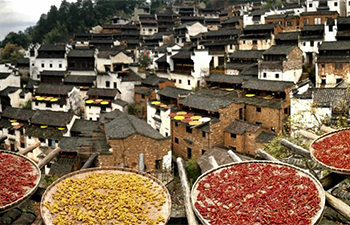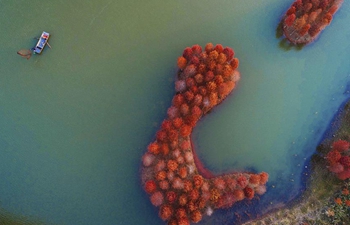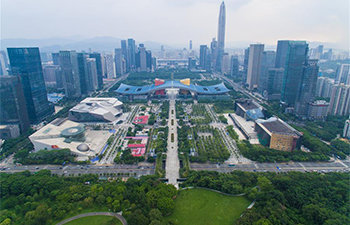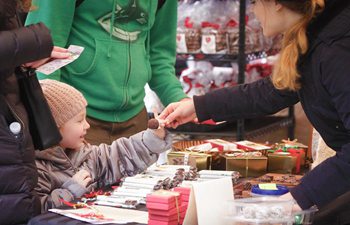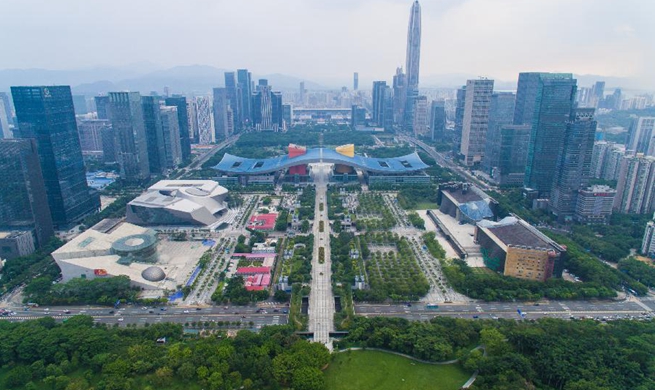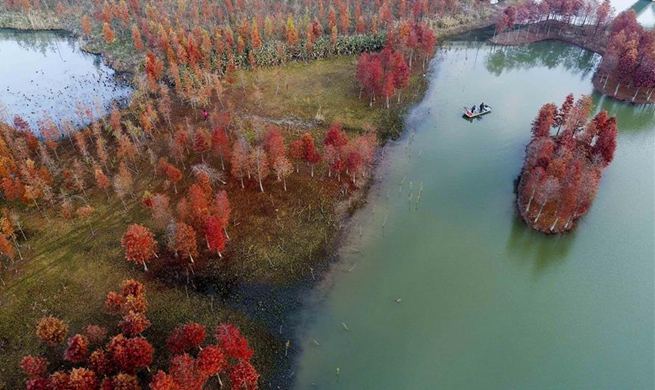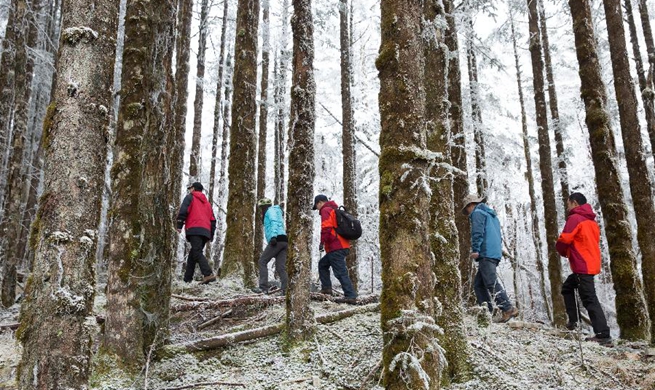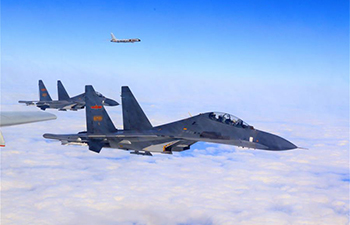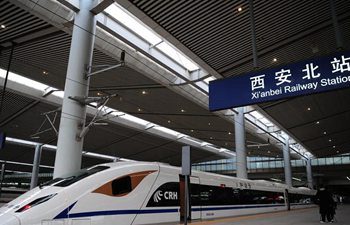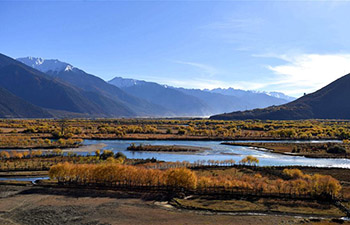by Burak Akinci
ANKARA, Nov. 26 (Xinhua) -- The renovation work launched by the Turkish government in the conflict-ravaged old city of Diyarbakir has stirred debate among the local population and experts who call on authorities to preserve historic sites.
Some sites of Sur district in the city was in the UNESCO World Heritage list.
However, after the collapse of a two-year ceasefire, the district became the scene of several months of unprecedented urban clashes between the Kurdistan Workers' Party (PKK) and Turkish security forces.
Most of the ancient houses and other historic sites within the city walls have been damaged or destroyed.
HISTORIC CITY DESTROYED IN CONFLICT
Young armed fighters of the blacklisted PKK created havoc in the district, terrorizing the residents, erecting barricades, setting up checkpoints and dug tranches, prompting heavy armed response.
The fighting erupted in 1984, when the Kurdish rebels began armed campaign against the Turkish government, leaving so far some 40,000 people dead.
In a ruling Justice and Development Party (AKP) meeting, Environment and Urbanization Minister Mehmet Ozhaseki said that a total of 70,000 dwellings and workplaces, 27,000 heavily or completely damaged and 43,000 less damaged, in seven districts of southeast Anatolia were destroyed due to terrorist activities in the region.
According to the Turkish government, 2.6 billion Turkish liras (660 million U.S. dollars) have been spent on the maintenance works of less-damaged buildings, demolition of heavily damaged houses, compensation fees for locals and others.
Religious sites were not spared either. At least five churches and nearly 10 mosques have suffered serious damages, according to official data.
An Armenian Catholic Church, known as Surp Giragos, which dates back to the 19th century and was known for its brilliant ceramic work, suffered from severe damages in the clashes.
"Reconstruction as altered the social and historic tissue of the Sur district with a known history of 7,000 years. This area was the most history-packed one of Diyarbakir, now it is been lost to a development program," said Serefhan Aydin, head of the Chamber of Architects of Diyarbakir.
Aydin pointed out that six neighborhoods of Sur are still inaccessible to people except the construction team. The measure was detrimental as experts could not enter the area to supervise the ongoing work.
"From aerial footage, we saw that at least 100 protected houses have been destroyed by forklift operators in those neighborhoods and we could not see what is really going on there because the site is still prohibited to enter," the architect lamented.
PLACE TOO EXPENSIVE FOR LOCALS TO LIVE IN
A Turkish official in Ankara overseeing the project denied the claims saying that "the ancient houses are been restored according to the original looks. We have experts on the ground who create a replica of the houses that have been partially or entirely damaged by terrorist activities."
"Some houses had to be destructed because they had been irreparably damaged by PKK terrorists who dug trenches and holes in the houses in order to entrench themselves from the security forces," explained the source on the condition of anonymity.
Locals and rights activists claimed that the development scheme was disrupted by the central government's desire to rebuild Sur into a lucrative tourist attraction, turning it into a district far too expensive for its former impoverished residents to live in.
"Measures need to be taken in Sur as most of the people living there were in unhealthy conditions, but they should not be done in the current way," said local journalist Mahmut Bozarslan.
"Local residents had no say in the rebuilding operations. The expropriation fee paid to them is insufficient to buy a new house in the same district. The works will go on for another two years, but people who left Sur will never be able to return there," said Bozarslan.
Turkish President Recep Tayyip Erdogan said in 2011, long before the launch of the reconstruction plan, that he was "dreaming" of the reconstruction of Sur, with the aim of rebuilding it into true Ottoman style and to turn it into an international tourism destination.
After nearly two years of reconstruction, Sur is still open to debate and opinions remain divided.
The Chamber of architects of Diyarbakir is planning to reveal a comprehensive report on the work in the first week of December as officials insisted that the conflict-torn city would reflourish in the future.




